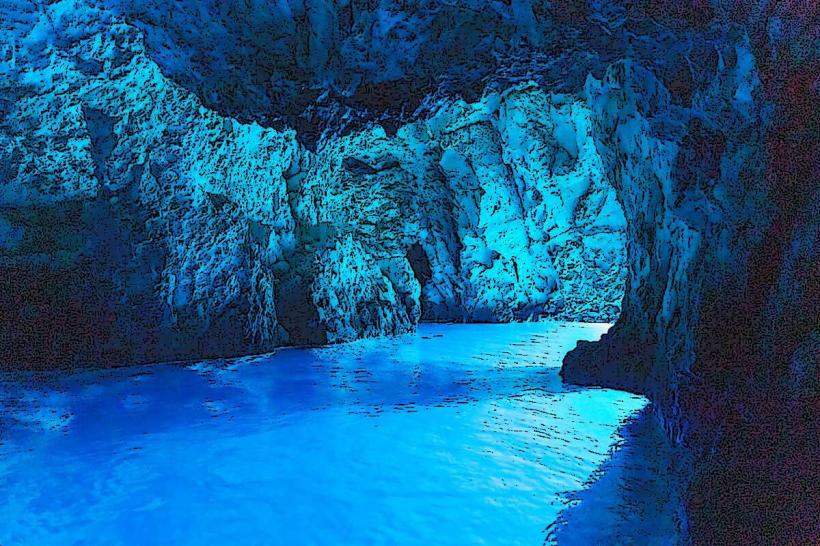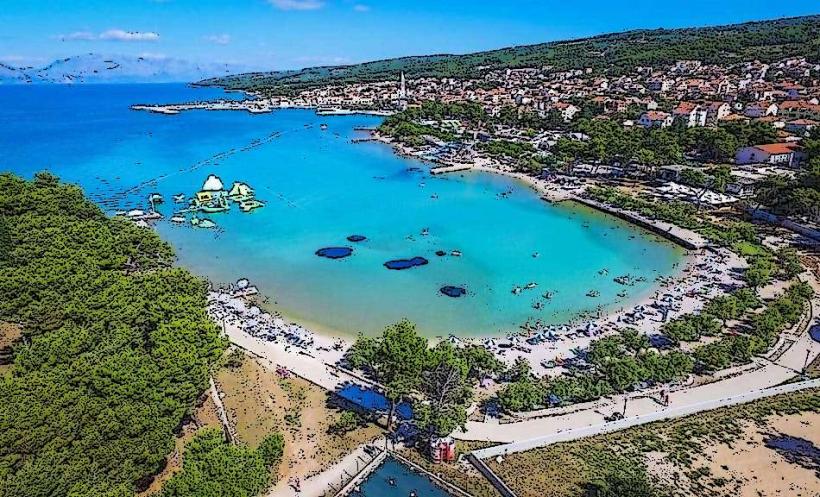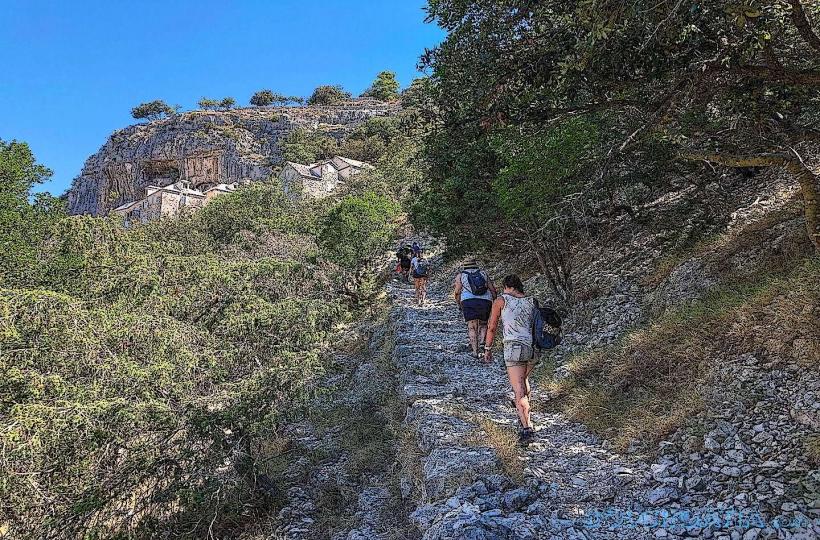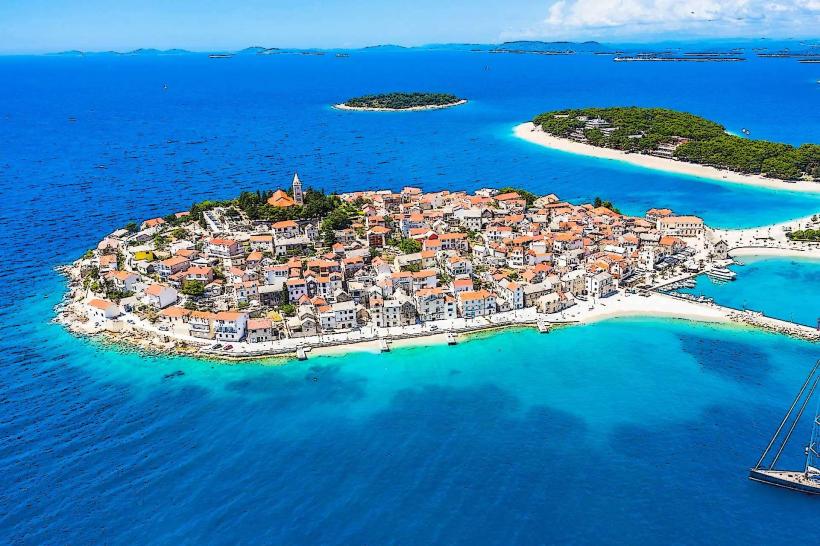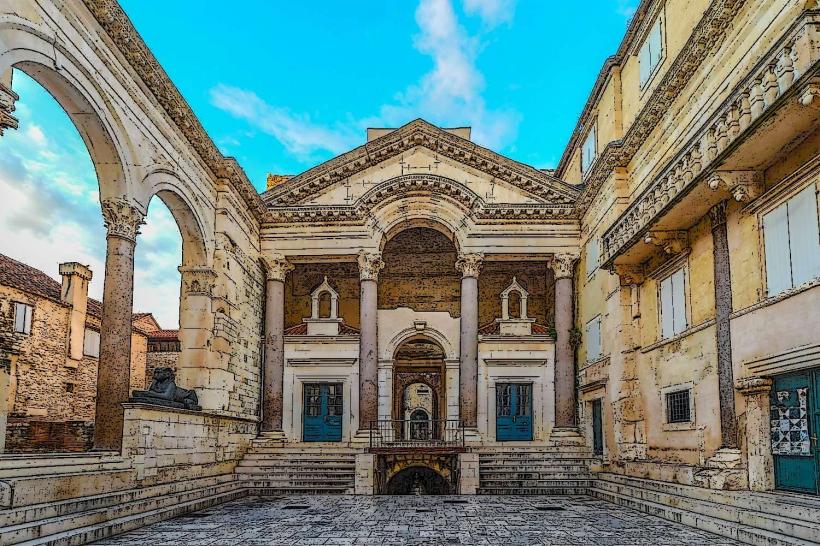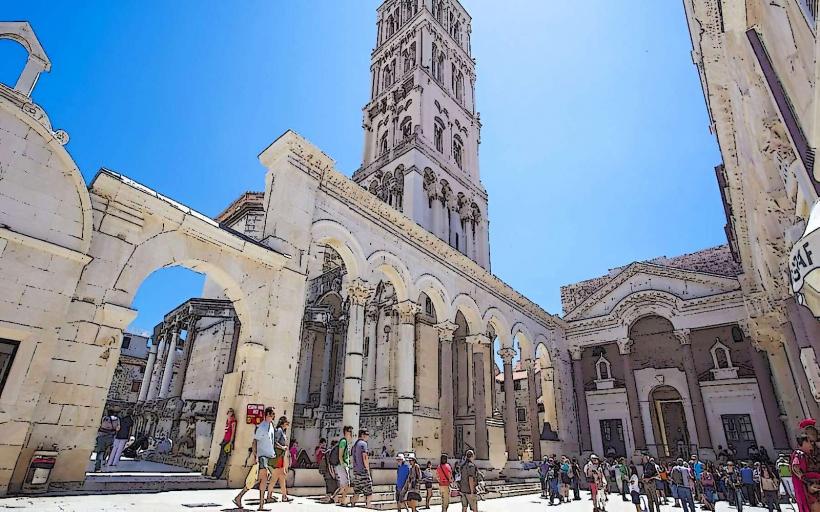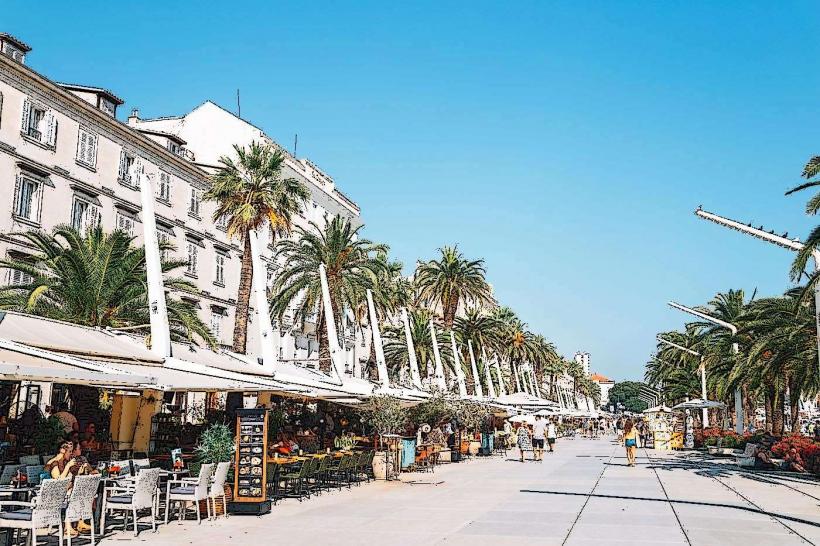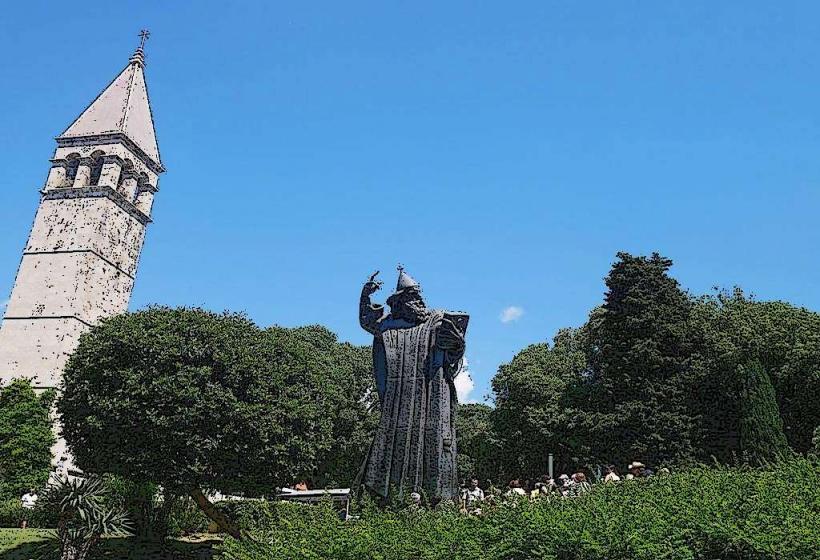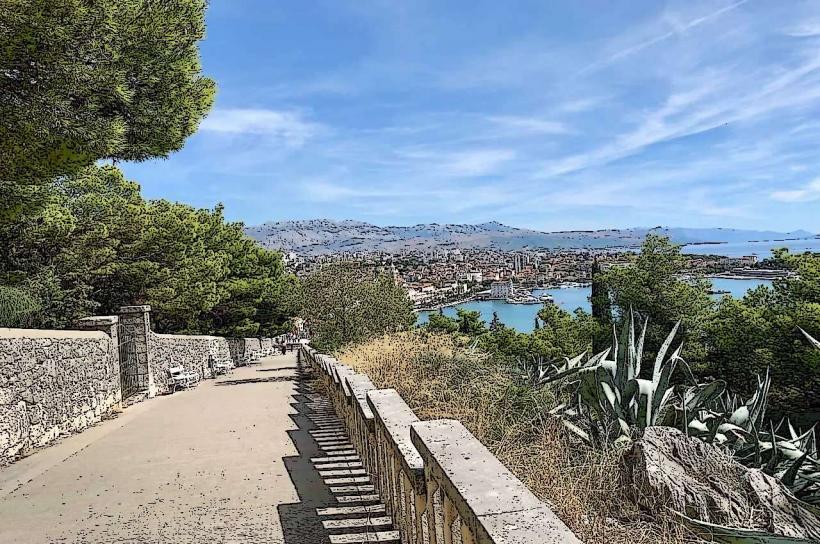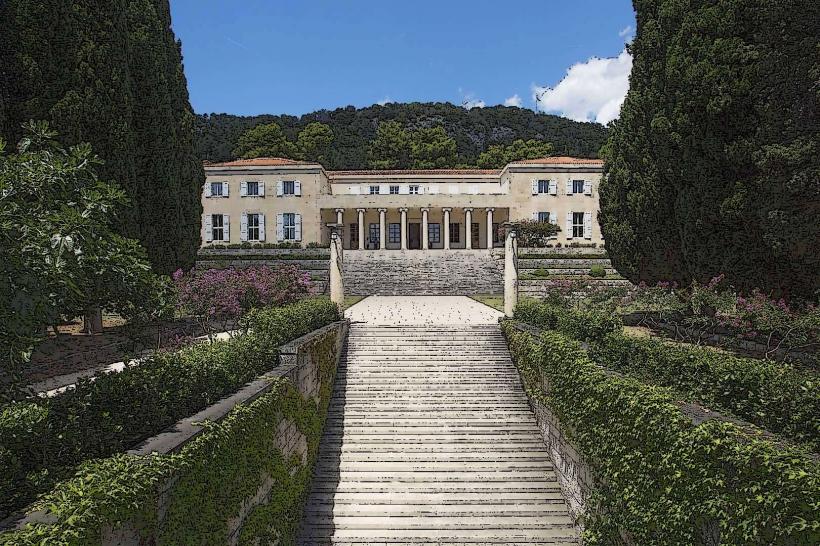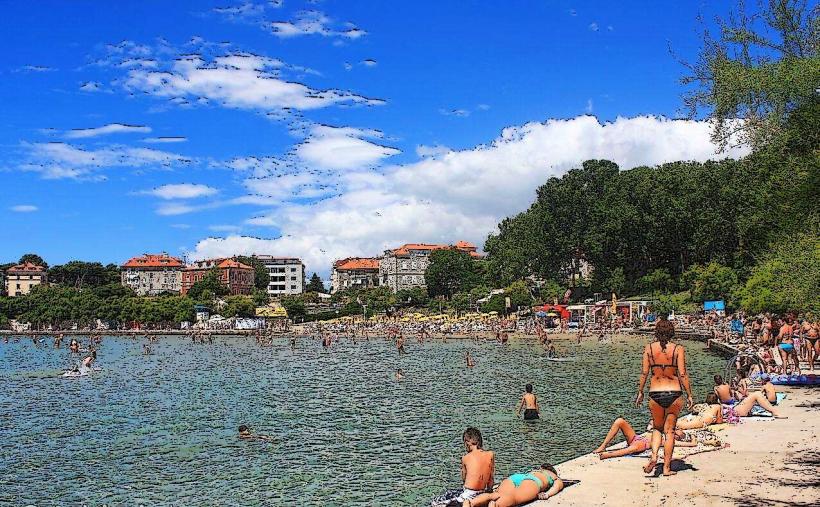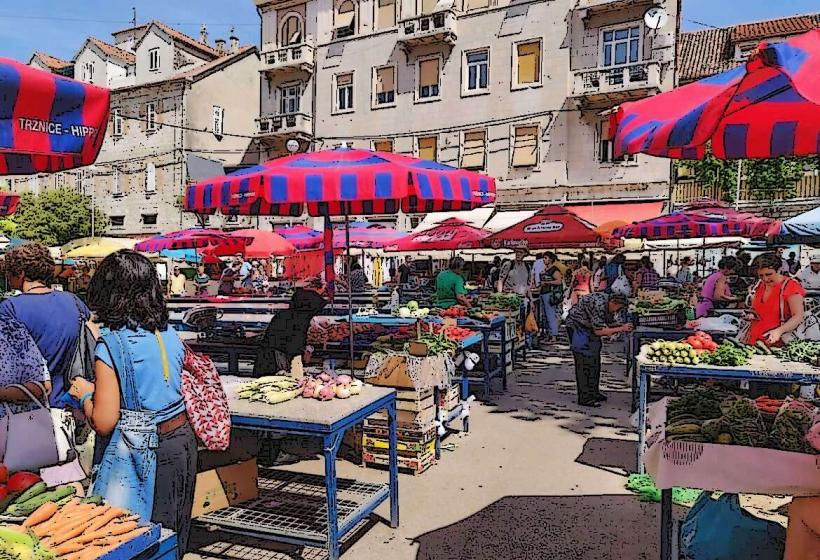Information
Landmark: Split Archaeological MuseumCity: Split
Country: Croatia
Continent: Europe
Split Archaeological Museum
The Split Archaeological Museum is one of Croatia’s most significant museums dedicated to the preservation and exhibition of the country’s ancient history. Located in Split, the museum houses a vast collection of artifacts from the prehistoric, Greek, Roman, and medieval periods, offering a fascinating glimpse into the region’s rich cultural heritage.
History and Origins
- Founded: The Split Archaeological Museum was founded in 1820, making it the oldest museum of its kind in Croatia. It was initially established to house the growing number of archaeological finds discovered in the area, particularly those related to Roman antiquity.
- Early Beginnings: The museum’s creation was part of the effort to organize and protect the growing collection of antiquities being unearthed in and around Split, as the region had been a major center of Roman culture, most notably during the reign of the Roman Emperor Diocletian.
- Relocation: Over the years, the museum has been relocated several times. Today, its permanent exhibition is housed in a 19th-century building near the Vladimira Nazora Park, just a short distance from the city center.
Exhibits and Collections
The Split Archaeological Museum’s collection spans a wide range of historical periods and is particularly notable for its extensive artifacts from Roman Dalmatia.
Prehistoric and Early Historical Periods:
- The museum features a large collection of prehistoric tools, pottery, and other artifacts that provide insight into the Bronze and Iron Ages in the region. Items such as ceramic vessels, weapons, and tools help illuminate the daily life and customs of the prehistoric inhabitants of the area.
- The Liburnian culture, an ancient people who lived along the Dalmatian coast before the Roman conquest, is also represented in the museum's exhibits, showcasing items such as bronze jewelry and burial artifacts.
Greek and Roman Artifacts:
- The museum has a remarkable collection of Roman artifacts, many of which were discovered in the Diocletian’s Palace area, a UNESCO World Heritage site and the heart of Split. These include sculptures, inscriptions, and pottery from the period of Roman rule.
- There is a large display of funerary monuments, including sarcophagi, tombstones, and urns, reflecting the practices and rituals of the Roman people. Many of these artifacts were taken from ancient Roman burial sites around Split.
- A notable feature of the Roman collection is the epigraphic section, which houses Roman inscriptions on stone, bronze, and marble, many of which relate to the construction and social structure of Diocletian’s Palace and other Roman settlements in the area.
- The museum also displays a number of Roman statues and reliefs, depicting deities, emperors, and important Roman figures.
Early Christian and Medieval Art:
- The museum’s collection also includes Early Christian artifacts, including mosaics, tombstones, and religious objects from the period following the fall of the Roman Empire. The items on display reflect the transition from pagan Roman traditions to the spread of Christianity in the region.
- The medieval section of the museum showcases stone carvings, architectural fragments, and coins, many of which originated from Split and the surrounding areas during the Middle Ages.
Coins and Numismatics:
- One of the museum’s most extensive collections is its collection of ancient coins. These coins come from various periods, including Greek, Roman, and Byzantine times, providing important insights into the economic history and trade practices of the region.
- The numismatic collection is particularly strong in its representation of Roman coinage, which was used extensively in the area during the Roman Empire.
Highlights and Notable Exhibits
The Diocletian's Palace Finds: The museum houses an impressive collection of Roman artifacts unearthed from Diocletian’s Palace, Split’s most famous landmark. These items include architectural elements, sculptures, and ceramics that give visitors a deeper understanding of the palace’s construction, its use, and daily life in the Roman period.
Roman Sarcophagi: The museum boasts a collection of Roman sarcophagi that were used for burying the wealthy elite of Split during Roman times. The ornate carvings on these sarcophagi depict scenes from mythology, battle, and religion, offering a glimpse into Roman burial practices and beliefs about the afterlife.
Early Christian Mosaics: One of the museum's gems is its collection of early Christian mosaics that once adorned churches and other buildings in the region. These vibrant mosaics depict Christian themes, offering a visual record of the spread of Christianity in Dalmatia.
The Bronze Age Artifacts: The museum also features artifacts from the Bronze Age, including tools, jewelry, and pottery that show the transition from primitive to more advanced societies in the region. These items provide valuable context for understanding the development of the area before Roman rule.
Museum Facilities
- Exhibition Halls: The museum has several spacious halls divided by periods, offering a logical and easy-to-follow narrative of the region’s ancient history. The exhibits are well-lit and include informative labels in both Croatian and English, making the museum accessible to international visitors.
- Temporary Exhibitions: In addition to its permanent collection, the Split Archaeological Museum regularly hosts temporary exhibitions, showcasing new archaeological findings, special themes, or collaboration with other museums in Croatia and abroad.
- Museum Shop: The museum has a small shop offering souvenirs, including books, replicas of artifacts, and locally made crafts.
Visiting the Split Archaeological Museum
- Location: The Split Archaeological Museum is located near Vladimira Nazora Park in the city of Split. The address is Zrinsko Frankopanska 25, a short walk from the city center.
- Opening Hours: The museum is typically open daily except for Mondays. The exact hours may vary by season, so it is advisable to check in advance.
- Admission Fees: The museum charges a small entry fee, which is affordable for most visitors. Discounts are often available for students, seniors, and groups.
- Best Time to Visit: The museum is less crowded during the off-season (fall and winter), making it an ideal time for a quieter, more reflective visit. However, the museum is also popular with tourists in the summer months, so it’s best to visit early in the day to avoid the busiest times.
Why Visit the Split Archaeological Museum?
- Comprehensive Collection: The museum offers a detailed, well-curated collection that spans multiple historical periods, with a particular emphasis on the Roman period, which had a significant impact on Split’s development.
- Historical Insight: The museum provides a deeper understanding of the region’s rich history and the role Split played in the broader context of ancient Mediterranean culture.
- Cultural Heritage: For anyone interested in archaeology, history, or art, the Split Archaeological Museum is an essential destination. It allows visitors to connect with the ancient past of Split and Dalmatia in a meaningful way.
- Educational Experience: The museum is an excellent educational resource for both adults and children, providing a comprehensive view of the ancient world through tangible, well-preserved artifacts.
Conclusion
The Split Archaeological Museum is a treasure trove of ancient artifacts and historical insights, making it one of the most important cultural institutions in Split. With its extensive collections from the prehistoric, Greek, Roman, and medieval periods, it provides visitors with a fascinating journey through the region's rich past. Whether you're a history enthusiast or simply curious about Split's origins, the museum is an essential stop for anyone visiting the city.

